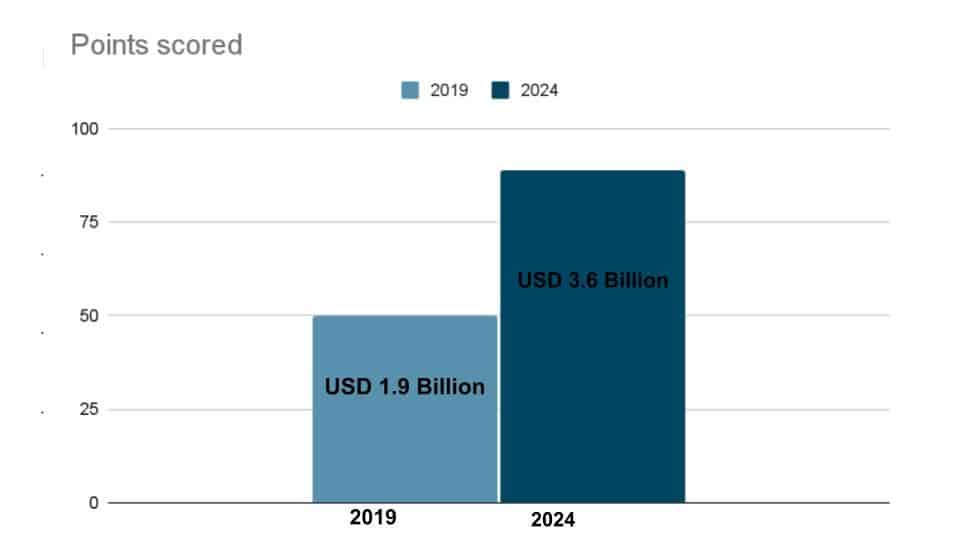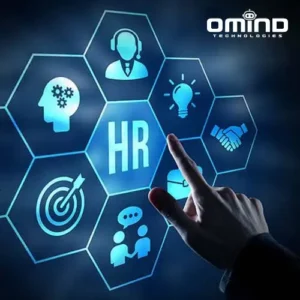We all know that the human resources department has a lot of significance in holding the business growth and catering to competitive requirements. It is considered an ultimate solution to build a positive employee experience and to design a healthy work environment, thus positively impacting the organization. This is why managers pay more attention to evaluating the key HR metrics. What about your thoughts?
We will definitely give you a clear insight into the HR metrics, but before that, let us briefly discuss a few things –
- What are the key HR metrics?
- How do the HR metrics influence the HR strategy and the business later on?
What are the key HR metrics?
HR metrics or human resources metrics are the important data that help organizations to analyze workforce efficiency, track human capital, and measure the effectiveness of HR based on business requirements.
Many evolving brands leverage digitally-advanced HRMS solutions to speed up the HR management process and run a successful HR management strategy. But of course, implementing a strategy is not enough if you are expecting an improved result. The only thing that may help you in this scenario is measuring the HR metrics.
The KPI for HR that you need to analyze frequently is listed down based on different categories.
- Recruitment
- Training and development
- Engagement and retention
- Time tracking
- Employee performance
- HR software service
How do the HR metrics influence the HR strategy and the business later on?
You must have heard the famous quote by Peter Drucker – Everything that is measured can be managed and improved.

How many of you agree to this?
A recent survey proves that the more you can measure your HR initiatives, the more you can deliver better results to your business. This is what you call HR data analysis in technical terms. HR analytics help leaders to make better decisions in workforce planning. If you go through the recent statistics on global HR analytics, the market size in 2019 was USD 1.9 billion and is expected to hit 3.6 billion by 2024. The CAGR during this forecast period is predicted at around 13.7%.

Fig: HR analytics market size (2019-2024) with 13.7% CAGR (Source: Markets and Markets)
The reason behind this growth in the global HR market is the rise in demand for reducing HR expenses and streamlining the overall process in every organization.
Related read: Why is HRMS an immediate need for every organization?
Key HR Metrics You Need to Measure
Recruitment metrics
- Headcount: Total number of employees currently working in an organization.
- Demographics: It offers a complete insight into the employee’s age, service, experience, gender, and education level.
- Acceptance rate: It is defined as the number of offer letters shared to the number of offer letters accepted by the candidate.
- Cost per hire: Total cost for hiring a new employee.
- Time to hire talents: Average time between sharing a job post to accepting the offer by a candidate.
- Time to productivity: Time taken by a newly hired employee to deliver quality output.
- Employee turnover: It is defined as the number of new hires leaving the organization within a few days.
Training and development metrics
- Training expenses: Total amount spend to organize training and development programs either virtually or physically.
- Training completion rate: Number of employees who have complete the training sessions successfully divided by the total number of employees.
- Training effectiveness: Human resource management software can be utilized to measure the training effectiveness by monitoring the training programs and regular assessments.
Engagement and retention metrics
- Employee satisfaction: Number of employees satisfied with their job and highly recommend the organization to others.
- Turnover rate: Percentage of employees leaving organization within a specific time period. This can be further divided into two categories – voluntary turnover rate and talent turnover rate. Voluntary turnover defines the number of employees leaving an organization voluntarily. While talent turnover defines a number of highly talented individuals leaving the organization.
- Retention rate: Percentage of employees staying back in the organization for a certain period of time.
Time tracking HR metrics
- Absence rate: Average number of days employees remain absent, except the leaves that the managers approve.
- Overtime hours: Time spent by the employees after their scheduled work hours.
Employee performance metrics
- Revenue per employee: Total revenue generated by total number of employees in an organization.
- Employee performance: You can gain employee performance metrics by assessing the self-evaluation programs, employee reviews, manager assessments, and so on.
- Goal tracking: The best way to track individual goals is by including performance management software. It allows setting goals, meeting business requirements, and measuring employee progress.
- Company performance: This is one of the most important human resources metrics that determine how great the employees are performing, leveraging the business to a wide extent.
HR software service
- Ratio of HR professionals to employees: Number of HR professionals to a total number of employees in an organization.
- Cost of HR per employee: Total amount spent on HR functionalities divided by the total number of employees.
- Employee participation rate: Number of employees leveraging the employee performance management software divided by total number of employees in the organization.
- ROI: Multiple factors contribute to generating the ROI of HR software. It is calculated by taking the difference between the amount spent by an organization on software and the amount your organization can save from it.
Conclusion
Measuring the HR metrics should be your top priority if you want to enjoy a better employee experience and high employee retention. Every single metric mentioned above is considered pivotal for driving a great impact on HR strategy. The HR figures will give you a better insight into the HR strategy, allowing the managers to redesign it based on the organization’s requirements, priorities, team collaboration, and more. Definitely, human resource management software will help you out with data analytics and reporting.
Are you looking for strong HR potential for your organization?
Check out our leading software solution, Mind Workplace that allows users to measure the key metrics with perfection. You can reach out to Omind’s experts and get the best business-specific product.




